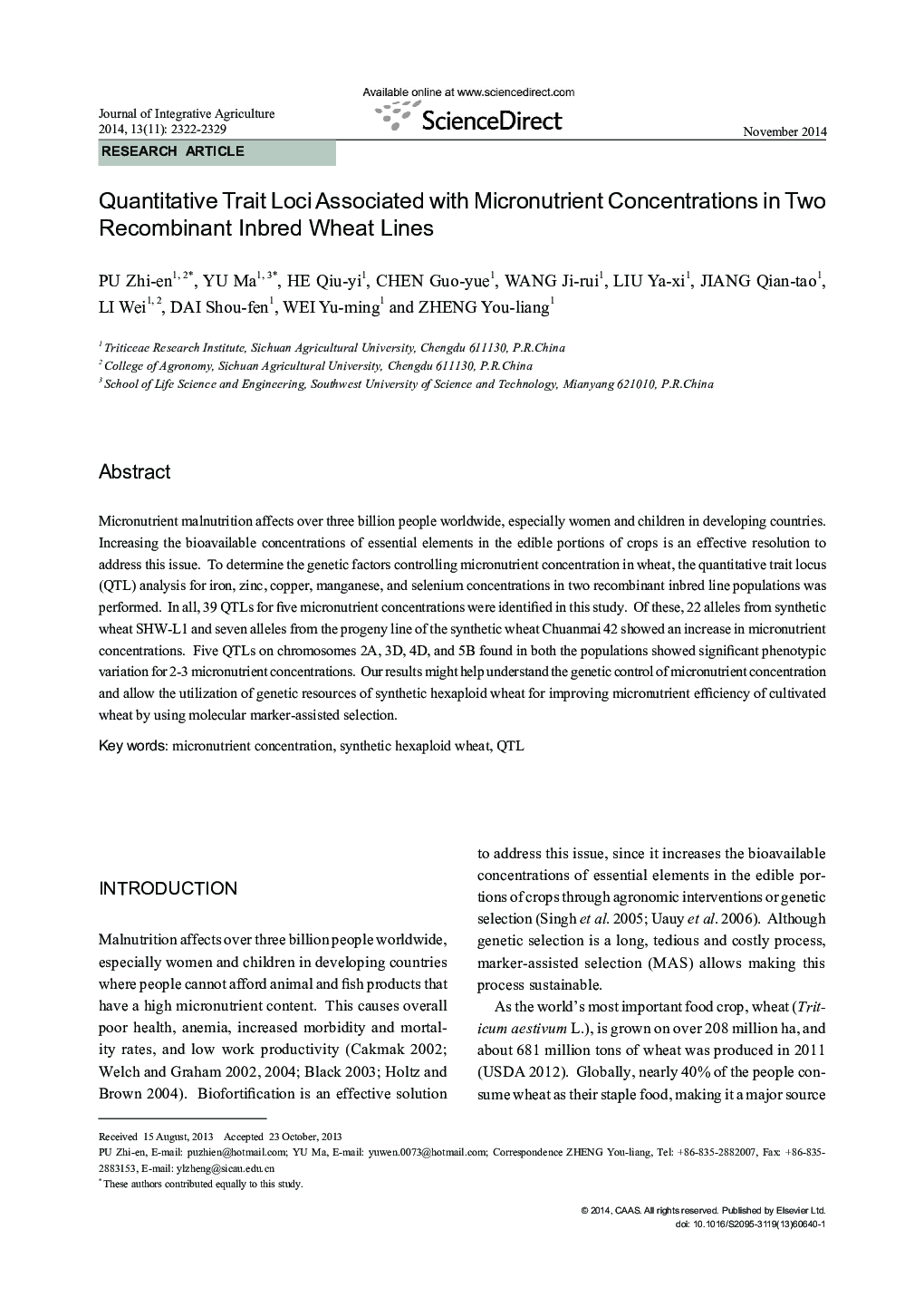| Article ID | Journal | Published Year | Pages | File Type |
|---|---|---|---|---|
| 4494428 | Journal of Integrative Agriculture | 2014 | 8 Pages |
Micronutrient malnutrition affects over three billion people worldwide, especially women and children in developing countries. Increasing the bioavailable concentrations of essential elements in the edible portions of crops is an effective resolution to address this issue. To determine the genetic factors controlling micronutrient concentration in wheat, the quantitative trait locus (QTL) analysis for iron, zinc, copper, manganese, and selenium concentrations in two recombinant inbred line populations was performed. In all, 39 QTLs for five micronutrient concentrations were identified in this study. Of these, 22 alleles from synthetic wheat SHW-L1 and seven alleles from the progeny line of the synthetic wheat Chuanmai 42 showed an increase in micronutrient concentrations. Five QTLs on chromosomes 2A, 3D, 4D, and 5B found in both the populations showed significant phenotypic variation for 2–3 micronutrient concentrations. Our results might help understand the genetic control of micronutrient concentration and allow the utilization of genetic resources of synthetic hexaploid wheat for improving micronutrient efficiency of cultivated wheat by using molecular marker-assisted selection.
